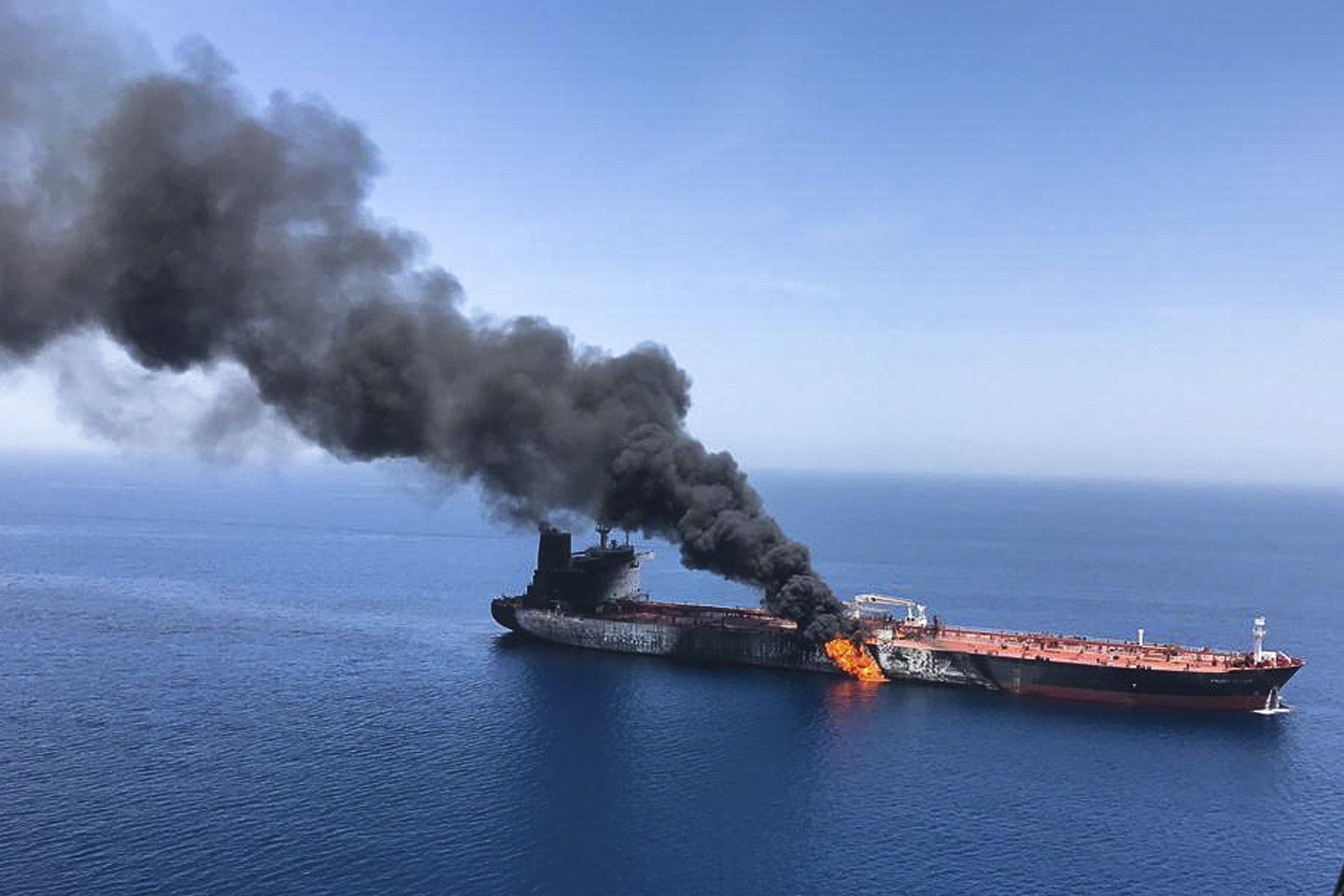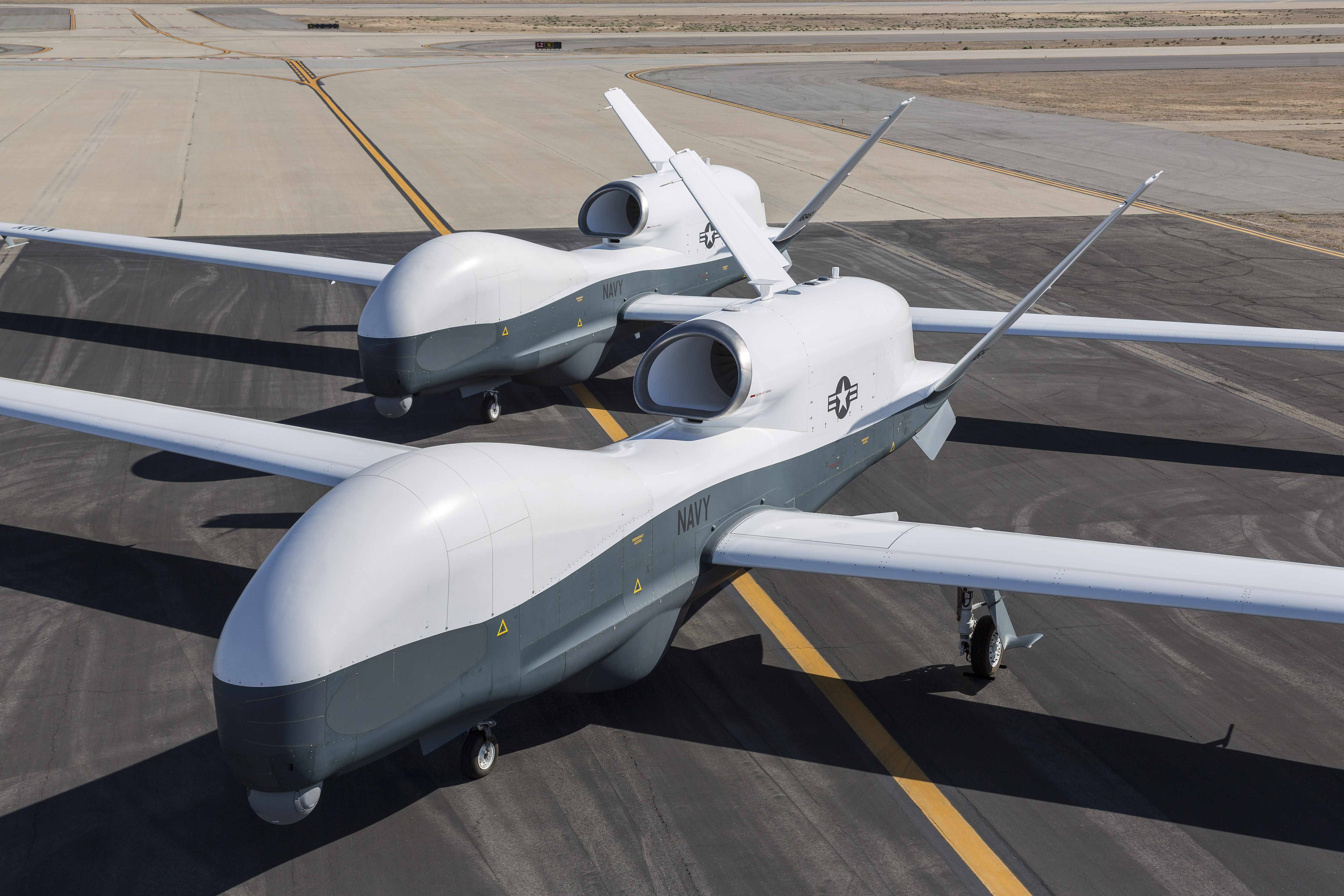Winston
Lorenzo von Matterhorn
- Joined
- Jan 31, 2009
- Messages
- 9,560
- Reaction score
- 1,749
Note that oil and, as a result, gasoline prices had been dropping. There was a spot on local news last night about that and that gasoline prices were expected to continue dropping. That was before these incidents made the news.
Two Tanker Ships Damaged In Suspected Attacks In The Gulf Of Oman (Updated)
The incidents come as the region is extremely on edge as tensions between the U.S., its Gulf State allies, and Iran continue to rise.
June 13, 2019
https://www.thedrive.com/the-war-zo...-tanker-is-on-fire-in-the-sea-of-oman-reports
Whatever happened, it occurred at a time when the entire region is extremely tense following an influx of U.S. forces due to largely unspecified intelligence reports about Iran spinning up operations against U.S. interests in the Middle East. A number of tankers were struck by what appears to be Limpet Mines shortly after the U.S. said it was speeding the Lincoln Carrier Strike Group to the region in an act of deterrence. Nobody has claimed responsibilities for those attacks that resulted in less than catastrophic damage to the tankers, although the U.S. and its partners in the region have stated that they think it was the work of irregular Iranian proxy forces.
Limpet mine damage:
https://the-drive.imgix.net/https:/.../message-editor%2F1560409758874-adads222.jpeg
U.S. Sees State Actor Behind Oil Tanker Attacks in Gulf Region
June 13, 2019
Second assault in month on ships near the vital oil chokepoint
Oil prices rose as much as 4.5% to more than $61 a barrel
https://www.bloomberg.com/news/arti...-on-fire-in-sea-of-oman-u-k-body-starts-probe
Two oil tankers were damaged on Thursday in a suspected attack near the entrance to the Persian Gulf, stoking fears that high-stakes diplomatic efforts won’t avert a military confrontation between the U.S. and Iran. Oil prices surged.
The incidents, including an attack on a Japanese-operated vessel, were the second in a month to hit ships near the Strait of Hormuz chokepoint, through which about 40% of the world’s seaborne oil travels. They come as Japanese Prime Minister Shinzo Abe, a rare ally of both Donald Trump and Iranian leaders, visits Tehran in an effort to ease tensions.
“Even in the absence of ironclad evidence, the U.S. and its allies will point the finger at Iran,” said Fawaz A. Gerges, professor of Middle Eastern politics at the London School of Economics. “These incidents are a bad omen because they point to a calculated escalation that tells us both sides are hunkering down.”
The prospects of a conflict have spiked since the Trump administration tightened its sanctions on Iranian oil exports in early May. Trump abandoned a year ago the 2015 deal that was meant to prevent Iran from developing a nuclear bomb and reimposed sanctions in a bid to force the Islamic Republic to rein in its military program and proxy militias.
Facing economic catastrophe, Iran has threatened to retreat from the accord itself unless European parties throw it an lifeline. Its supreme leader, Ali Khamenei, told Abe on Thursday that his country would not repeat the “bitter experience” of talks with the U.S.
The Bahrain-based Fifth Fleet said it received two separate distress signals at 6:12 a.m. and about 7:00 a.m. local time. “U.S. Navy ships are in the area and are rendering assistance,” Commander Josh Frey, a spokesman, said. He couldn’t confirm reports that one of the vessels was struck by a torpedo. Iran said it has rescued 44 sailors.
The manager of one tanker, the Norwegian-owned Front Altair, said it was sailing in international waters when it was damaged by an explosion, whose cause “is as yet unknown.” The Norway Maritime Authority said there were three detonations on board. The ship had loaded a cargo of naphtha in Abu Dhabi and was bound for Taiwan, a company official said.
A distress call over VHF radio from the Front Altair said the ship was “under attack and on fire," said Donald MacLeod, a navigation officer on a vessel about 45 miles away on the Oman Sea. "They had to abandon ship."
Kokuka Sangyo, the Japanese operator of the other ship, said it was attacked twice, three hours apart, forcing the crew to evacuate. The tanker was carrying 25,000 tons of methanol from Saudi Arabia to Asia.

Two Tanker Ships Damaged In Suspected Attacks In The Gulf Of Oman (Updated)
The incidents come as the region is extremely on edge as tensions between the U.S., its Gulf State allies, and Iran continue to rise.
June 13, 2019
https://www.thedrive.com/the-war-zo...-tanker-is-on-fire-in-the-sea-of-oman-reports
Whatever happened, it occurred at a time when the entire region is extremely tense following an influx of U.S. forces due to largely unspecified intelligence reports about Iran spinning up operations against U.S. interests in the Middle East. A number of tankers were struck by what appears to be Limpet Mines shortly after the U.S. said it was speeding the Lincoln Carrier Strike Group to the region in an act of deterrence. Nobody has claimed responsibilities for those attacks that resulted in less than catastrophic damage to the tankers, although the U.S. and its partners in the region have stated that they think it was the work of irregular Iranian proxy forces.
Limpet mine damage:
https://the-drive.imgix.net/https:/.../message-editor%2F1560409758874-adads222.jpeg
U.S. Sees State Actor Behind Oil Tanker Attacks in Gulf Region
June 13, 2019
Second assault in month on ships near the vital oil chokepoint
Oil prices rose as much as 4.5% to more than $61 a barrel
https://www.bloomberg.com/news/arti...-on-fire-in-sea-of-oman-u-k-body-starts-probe
Two oil tankers were damaged on Thursday in a suspected attack near the entrance to the Persian Gulf, stoking fears that high-stakes diplomatic efforts won’t avert a military confrontation between the U.S. and Iran. Oil prices surged.
The incidents, including an attack on a Japanese-operated vessel, were the second in a month to hit ships near the Strait of Hormuz chokepoint, through which about 40% of the world’s seaborne oil travels. They come as Japanese Prime Minister Shinzo Abe, a rare ally of both Donald Trump and Iranian leaders, visits Tehran in an effort to ease tensions.
“Even in the absence of ironclad evidence, the U.S. and its allies will point the finger at Iran,” said Fawaz A. Gerges, professor of Middle Eastern politics at the London School of Economics. “These incidents are a bad omen because they point to a calculated escalation that tells us both sides are hunkering down.”
The prospects of a conflict have spiked since the Trump administration tightened its sanctions on Iranian oil exports in early May. Trump abandoned a year ago the 2015 deal that was meant to prevent Iran from developing a nuclear bomb and reimposed sanctions in a bid to force the Islamic Republic to rein in its military program and proxy militias.
Facing economic catastrophe, Iran has threatened to retreat from the accord itself unless European parties throw it an lifeline. Its supreme leader, Ali Khamenei, told Abe on Thursday that his country would not repeat the “bitter experience” of talks with the U.S.
The Bahrain-based Fifth Fleet said it received two separate distress signals at 6:12 a.m. and about 7:00 a.m. local time. “U.S. Navy ships are in the area and are rendering assistance,” Commander Josh Frey, a spokesman, said. He couldn’t confirm reports that one of the vessels was struck by a torpedo. Iran said it has rescued 44 sailors.
The manager of one tanker, the Norwegian-owned Front Altair, said it was sailing in international waters when it was damaged by an explosion, whose cause “is as yet unknown.” The Norway Maritime Authority said there were three detonations on board. The ship had loaded a cargo of naphtha in Abu Dhabi and was bound for Taiwan, a company official said.
A distress call over VHF radio from the Front Altair said the ship was “under attack and on fire," said Donald MacLeod, a navigation officer on a vessel about 45 miles away on the Oman Sea. "They had to abandon ship."
Kokuka Sangyo, the Japanese operator of the other ship, said it was attacked twice, three hours apart, forcing the crew to evacuate. The tanker was carrying 25,000 tons of methanol from Saudi Arabia to Asia.






